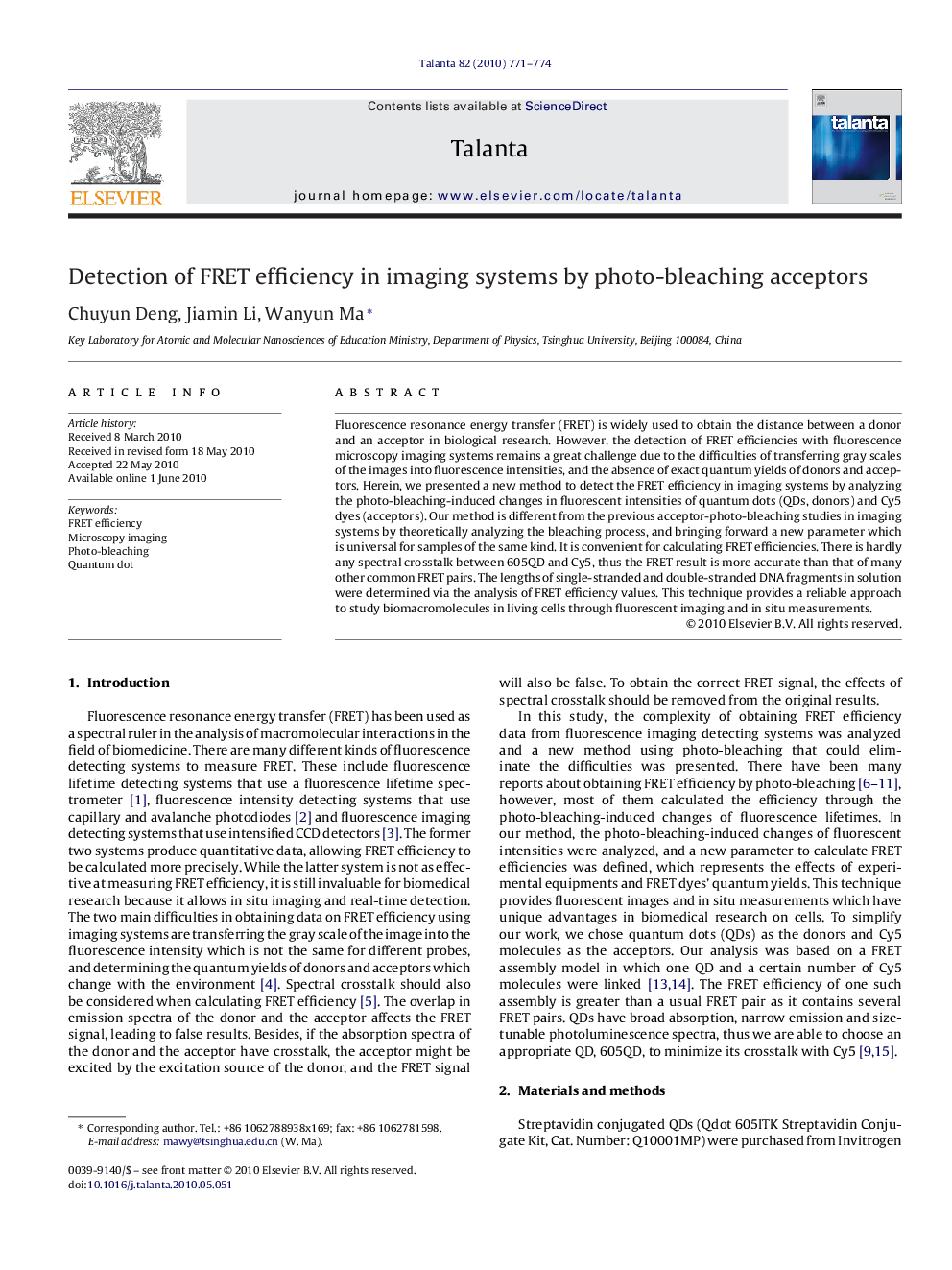| Article ID | Journal | Published Year | Pages | File Type |
|---|---|---|---|---|
| 1244718 | Talanta | 2010 | 4 Pages |
Fluorescence resonance energy transfer (FRET) is widely used to obtain the distance between a donor and an acceptor in biological research. However, the detection of FRET efficiencies with fluorescence microscopy imaging systems remains a great challenge due to the difficulties of transferring gray scales of the images into fluorescence intensities, and the absence of exact quantum yields of donors and acceptors. Herein, we presented a new method to detect the FRET efficiency in imaging systems by analyzing the photo-bleaching-induced changes in fluorescent intensities of quantum dots (QDs, donors) and Cy5 dyes (acceptors). Our method is different from the previous acceptor-photo-bleaching studies in imaging systems by theoretically analyzing the bleaching process, and bringing forward a new parameter which is universal for samples of the same kind. It is convenient for calculating FRET efficiencies. There is hardly any spectral crosstalk between 605QD and Cy5, thus the FRET result is more accurate than that of many other common FRET pairs. The lengths of single-stranded and double-stranded DNA fragments in solution were determined via the analysis of FRET efficiency values. This technique provides a reliable approach to study biomacromolecules in living cells through fluorescent imaging and in situ measurements.
